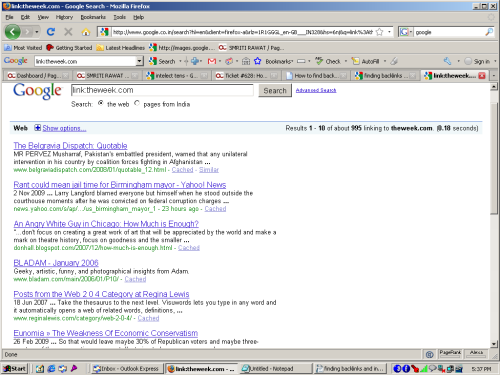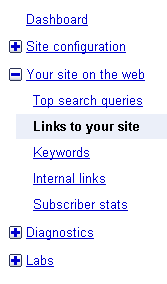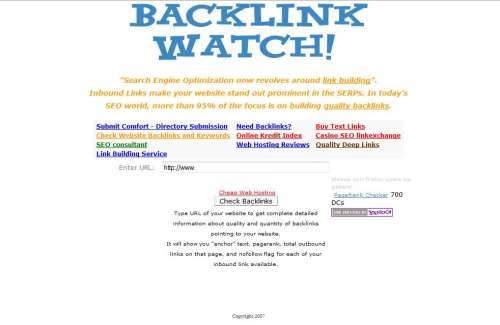Backlinks or the Inbound links are directed towards your website and play a crucial role in the search engine optimization. If a website has large number of backlinks, it will be considered more popular or important amongst search engines.
There is absolutely no doubt that backlinks or the inbound links can boost up the ranking of your website more than what its content can do. Apart from ensuring a regular flow of visitors, backlinks are used by search engines for crawling and ranking the site. Higher the number of backlinks on the site, more popular it would be considered by the search engine and higher would be its ranking on the search engine result pages.
You know that your site has backlinks but are not sure about the number of links it has. So, how to go about it? Over the period of time, numerous resources have been made available on the Internet to know about backlinks. But, there are chances that these resources might show you non-updated results or they will simply not disclose the number of backlinks present in your site.
So, how will you come to know the number of backlinks that are maintaining your site? Here are 5 easy tricks to that:
1. Rely on Google Search
If you will search for the expression link followed by the URL of your site at Google, you will get the number of backlinks to the website. Supposedly, you want to search backlinks to The Week magazine, search the following expression:
If you will search for the expression link followed by the URL of your site at Google, you will get the number of backlinks to the website. Supposedly, you want to search backlinks to The Week magazine, search the following expression:
link:theweek.com

In case Google shows no links to your website, you will have to accept that the Google search results for backlinks are incomplete and it will not show correct results in public.
If you will check Google Webmaster Tools, you will get better results because the results will be displayed in private. However, you can't completely trust Webmaster Tools for getting updated search results.
Yahoo! Site Explorer is said to show best results for backlinks.
There is another method to search for backlinks on Google search by not using the link: command but preferring the normal search over it.
In order to get accurate search result, you should put the url of the site in quotes. There are chances that internal links will also be included in the search results. In case you want to see the backlinks only from other sites, you will have to remove all the internal links from your site.
Suppose, I am searching for the backlinks on my site, the command entered would be:
“pagetraffic.com” –site:pagetraffic.com
There are a few things you should keep in mind:
- Remember putting the quote signs and minus signs.
- Put a space before minus sign.
- No space between the site: and the site-name.
2. Google Webmaster Tools
For using this technique, you need to have a Google account. If you have one, open the Google Webmaster Tools site and choose the site for which you want to view the backlinks. Choose the “Your site on the web link” on the dashboard and click the links to your site link under this option. The right pane will have the pages of the site with backlinks. You will now have to click on the web page links or on the home page link to see the inbound links.

3. Backlink Watch
Along with the number of backlinks, it will also show the PageRank of the web pages linked to the site. You will get the number of outbound links that are linked from web pages to your site.
Another useful information provided by Backlink Watch is if the backlink is “nofollow” or normal.

4. Yahoo! Site Explorer
According to webmasters, Yahoo! Site Explorer is the best tool for finding backlinks. You will have to search for the backlinks by entering the full URL of the domain. It will include the “http://” string or else the results might be incomplete.
For example
link:http://pagetraffic.com/
or with the string:
or with the string:
You will get different results from different strings, so try both. There are many features for link search on Yahoo! Search Explorer like you can only get a list of backlinks to home page or the entire site.

You can also search for all the backlinks or backinks excluding the whole domain or the ones excluding the current sub-domain.

5. Alexa.com
Use the following expression for checking backlinks to the site from Alexa
By entering the expression, you will get a detailed information about the website and the number of sites linking to it

In case you are interested in knowing the details of sites linked in, you just have to click on the number showing the linked sites.
There are many more resources on the Internet for finding out the backlinks to your site apart from the tricky 5 we have discussed.


